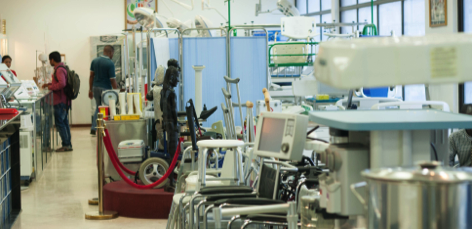
MIT Sloan Students Help Gradian Develop A Service Strategy



Service is one of our fundamental tools in pursuing our mission of improving safety and availability of surgical care around the world. We conceive of service as a way to ensure that the equipment we distribute is in the hands of those who know how to use it safely, and is fully functional and utilized for as much time as possible. We also seek to dispel the conception that medical devices in remote locations are ‘unserviceable’ by responding within 24 hours of a service issue, keeping in contact and periodically visiting all of our equipment customers, training technicians at every level, and standing by our 2 year warranty.
Nonetheless, this is a very difficult endeavor given the many challenges associated with poor supply chain systems, excessively complicated customs and importation procedures, and poor infrastructure for traveling to remote areas, among many other challenges.
We had the great fortune to have a talented and energetic group of students from MIT Sloan School of Management assist us in formulating a comprehensive service strategy to maximize equipment uptime and utilization while remaining cost-effective. The student group consisted of Andre Rachik, Julius Tapper, Tim Wolfe, and Iris Zielske under the guidance of MIT Sloan Professor Anjali Sastry.
The following report from the field describes some of the impressions and discoveries experienced by our MIT Sloan friends while they traveled through Uganda and Tanzania to help us define our service strategy.

After 8 long hours on the road from Kampala, André and I finally reached our destination in Kisoro, Uganda to conduct an audit of the Gradian Universal Anesthesia Machine (UAM) at the local hospital. The next day we got back into the car and drove another 4 hours to the next hospital through the Bwindi Impenetrable Forest. It was the same long driving for a full week – 8 hours, 4 hours, 4 hours, 3 hours, 5 hours – as we traversed the western portion of Uganda.
The purpose of our trip was to understand how to structure after-sales servicing and maintenance of the UAM at far-reaching hospitals in Uganda and Tanzania. It quickly became apparent that one of the key issues we faced was the tremendous distance between hospitals.
In both Uganda and Tanzania, the original distributor manages primary maintenance responsibility for hospital equipment. These distributors are logically based in the largest cities to maximize their ability to import equipment. For these centrally-based distributors, biomedical technicians travel from the capital to each hospital to conduct both preventative and emergency maintenance. While this ensures greater quality control and the ability to operate a central spare-parts inventory, it inevitably yields a delay in response to emergency situations due to the travel time required.
Other distributors in Tanzania take a regional approach to distribution, maintaining a presence in 5 major cities. The distributor will have a biomedical technician in each city to conduct all maintenance within a defined catchment area, limiting required travel time to hospitals, but also requiring greater investment in organizational capacity to maintain a decentralized model. In addition, all replacement parts still need to be imported through the primary office in Dar es Salaam, so these parts have to travel to hospitals separate from the biomedical technicians.
Given the limited number of trained biomedical technicians in East Africa, it is important to optimize travel times to most effectively utilize the available talent. Both centralized and regional distributors need to focus on reducing travel time in order to maintain low levels of machine down-time, especially in under-resourced and far-reaching hospitals.